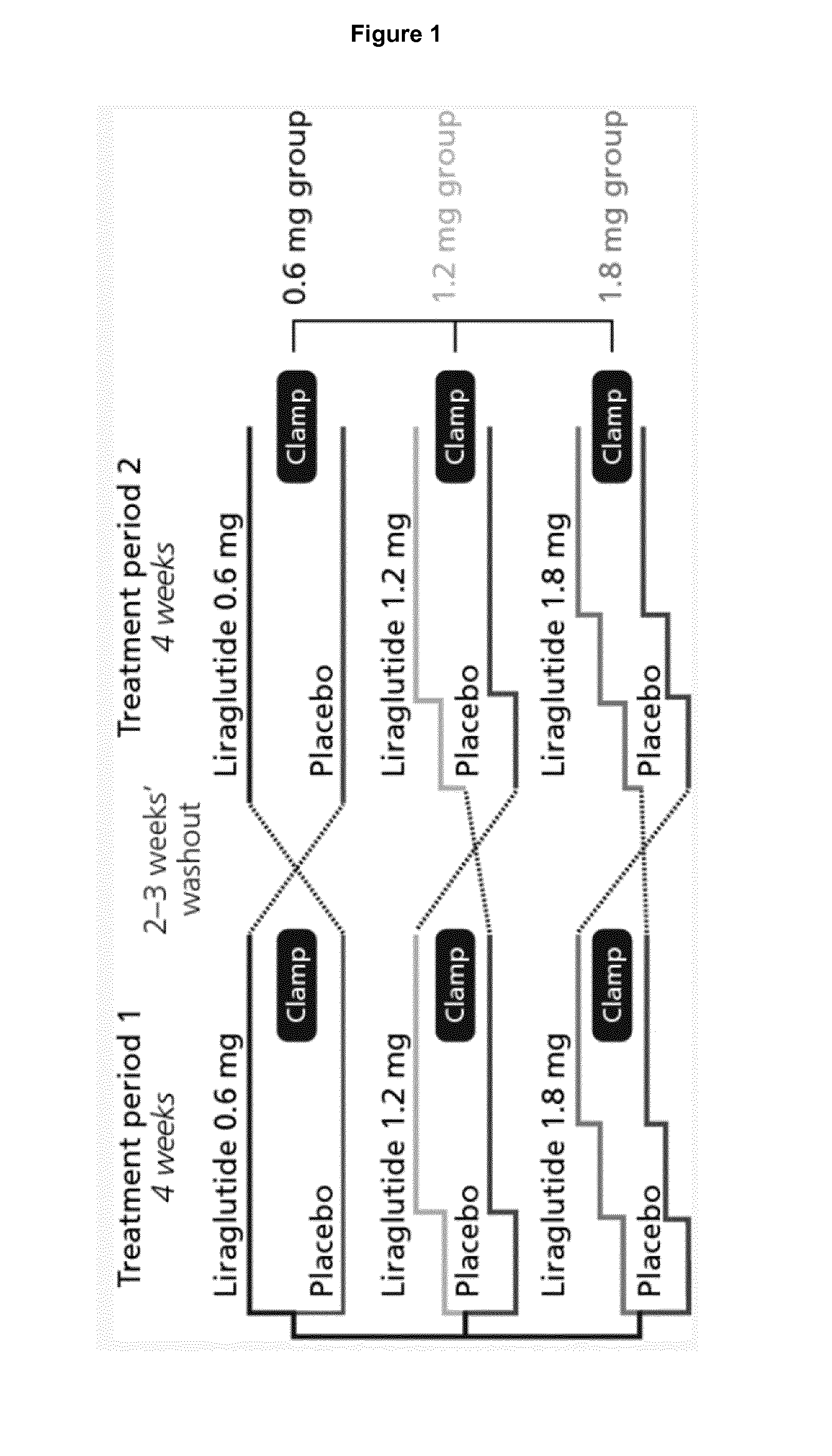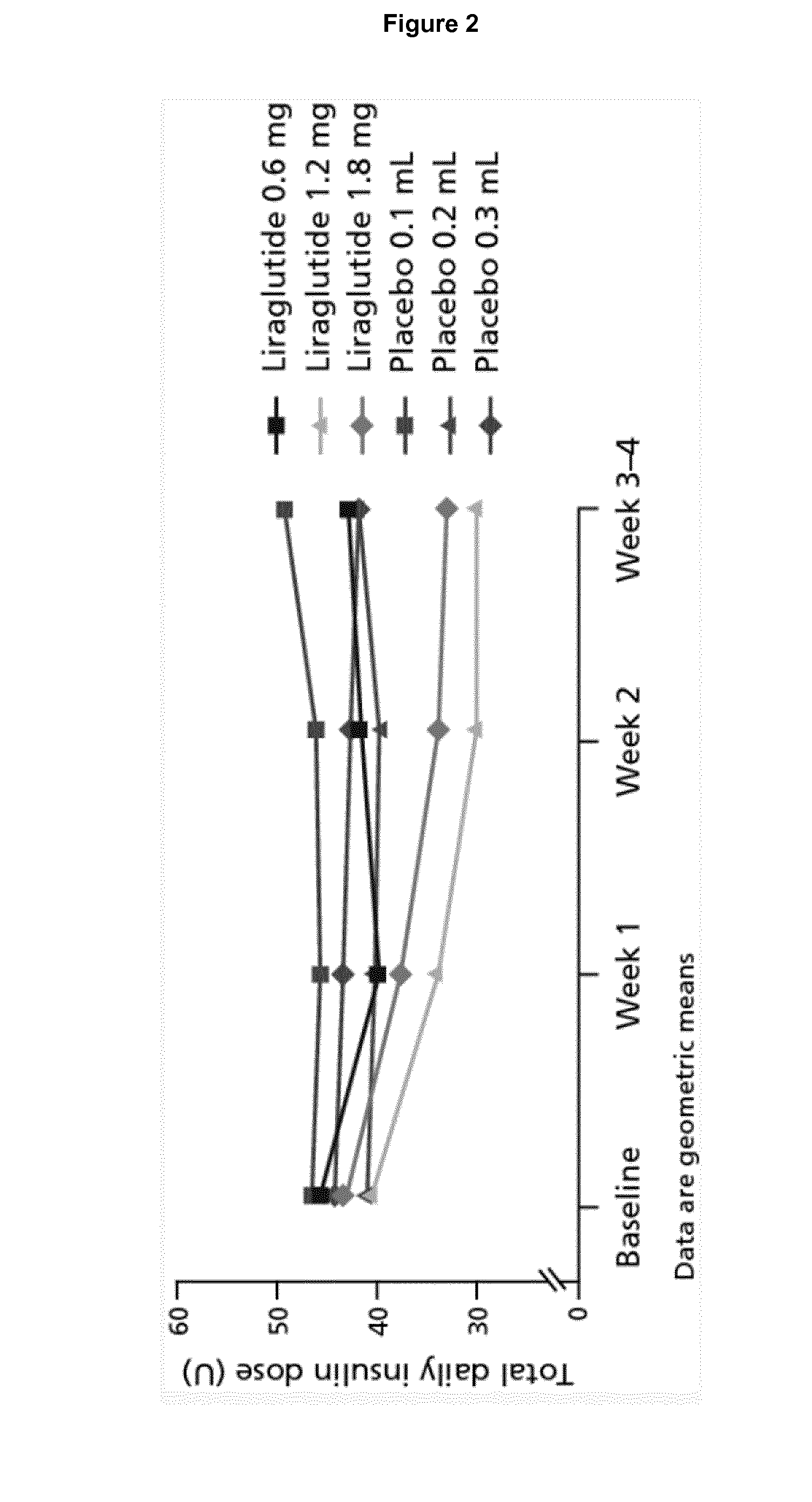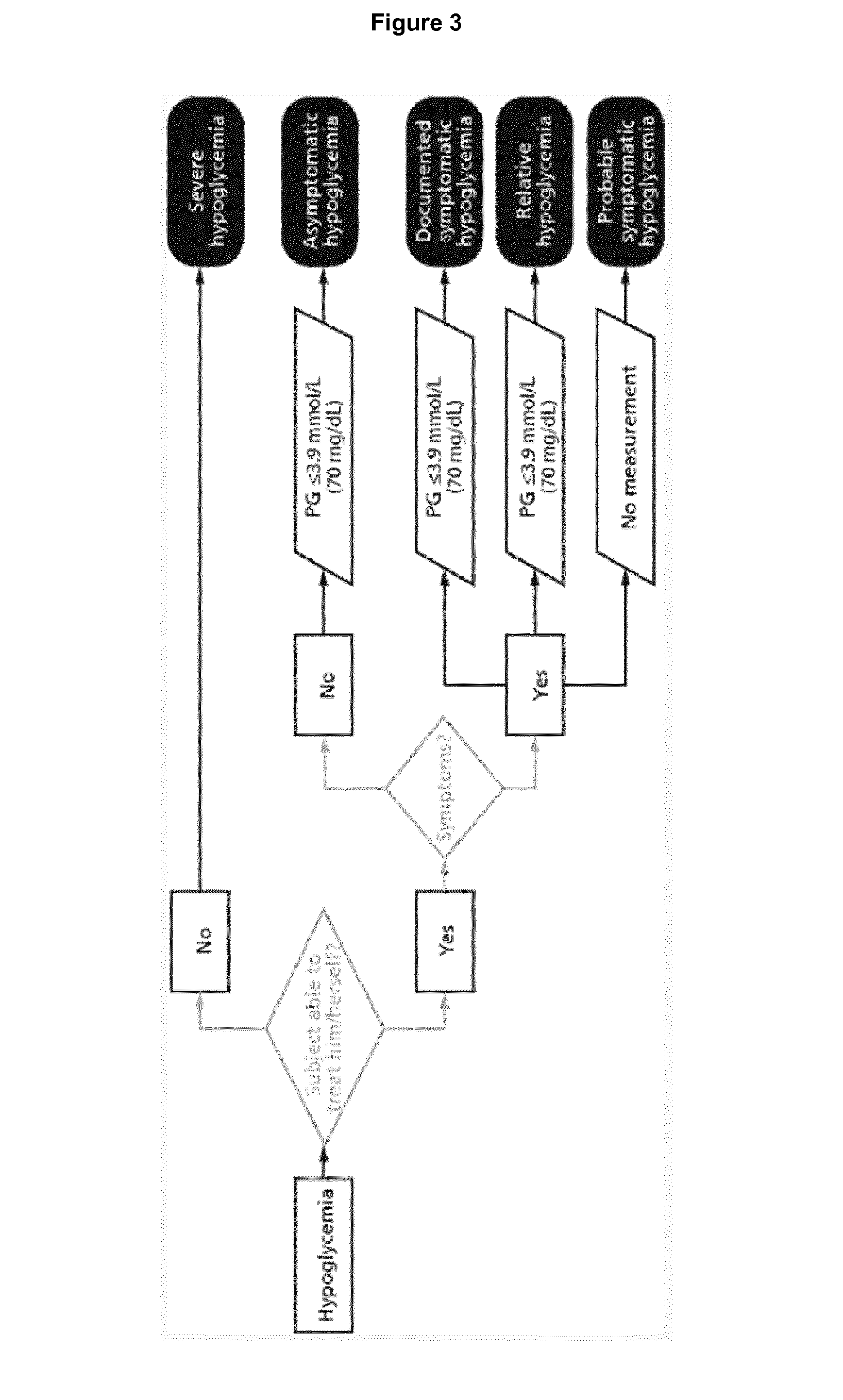Novel Uses of GLP-1 Receptor Agonists in Patients Treated with Insulin and/or Suffering from Type 1 Diabetes
a glp-1 receptor and insulin treatment technology, applied in the field of glp1 receptor agonists, can solve the problems of defective glucose counterregulation, sudden death, nocturnal hypoglycaemia,
- Summary
- Abstract
- Description
- Claims
- Application Information
AI Technical Summary
Benefits of technology
Problems solved by technology
Method used
Image
Examples
examples
[0422]The invention will now be described in more detail with the aid of the following Examples and Figures.
Abbreviations
[0423]CGM=continuous glucose monitoring
[0424]IG=interstitial glucose
[0425]PDE=person days of exposure
example a
Liraglutide as Adjunct to Insulin in Type 1 Diabetes: Effects on Glycaemic Control and Safety in a Randomized, Double-Blind Crossover Trial
Introduction
[0426]Small-scale studies and single case reports in subjects with type 1 diabetes indicate that treatment with a GLP-1 agonist1, such as liraglutide2,3, may result in:[0427]Improvement in glycaemic control[0428]Reduction of glucose excursions[0429]Reduction in frequency of hypoglycaemia[0430]Reduction in insulin requirements[0431]Weight reduction
[0432]In a trial investigating the effects of liraglutide treatment adjunct to insulin on counterregulatory responses during a hypoglycaemic clamp, we also assessed glycaemic control and safety during the 4-week treatment period.
Methods
[0433]45 adults with type 1 diabetes were randomised to 1 of 3 dose groups of liraglutide adjunct to insulin or placebo adjunct to insulin and 1 of 2 sequences (liraglutide / placebo or placebo / liraglutide) in a crossover design with a wash-out period between tre...
example b
Effects of Liraglutide as Adjunct to Insulin on Counterregulatory Hormone Responses to Hypoglycaemia in Type 1 Diabetes: A Randomized, Double-Blind Crossover Trial
Introduction
[0452]Incretin-based therapy may reduce glucagon levels in subjects with type 1 diabetes1-3.
[0453]Glucagon is an important counterregulatory hormone to hypoglycaemia, but glucagon response to hypoglycaemia may be deficient in subjects with type 1 diabetes4. If the glucagon response is further compromised by treatment with a GLP-1 receptor agonist, such as a GLP-1 analogue, it could be a limiting factor for the safe use of liraglutide as an adjunct to insulin treatment.
[0454]This trial served to investigate the counterregulatory hormone response to hypoglycaemia in subjects with type 1 diabetes following 4 weeks of treatment with liraglutide as adjunct to insulin treatment.
Methods
[0455]45 adults with type 1 diabetes were randomised to 1 of 3 dose groups of liraglutide adjunct to insulin or placebo adjunct to ins...
PUM
| Property | Measurement | Unit |
|---|---|---|
| time | aaaaa | aaaaa |
| time | aaaaa | aaaaa |
| time | aaaaa | aaaaa |
Abstract
Description
Claims
Application Information
 Login to View More
Login to View More - R&D
- Intellectual Property
- Life Sciences
- Materials
- Tech Scout
- Unparalleled Data Quality
- Higher Quality Content
- 60% Fewer Hallucinations
Browse by: Latest US Patents, China's latest patents, Technical Efficacy Thesaurus, Application Domain, Technology Topic, Popular Technical Reports.
© 2025 PatSnap. All rights reserved.Legal|Privacy policy|Modern Slavery Act Transparency Statement|Sitemap|About US| Contact US: help@patsnap.com



